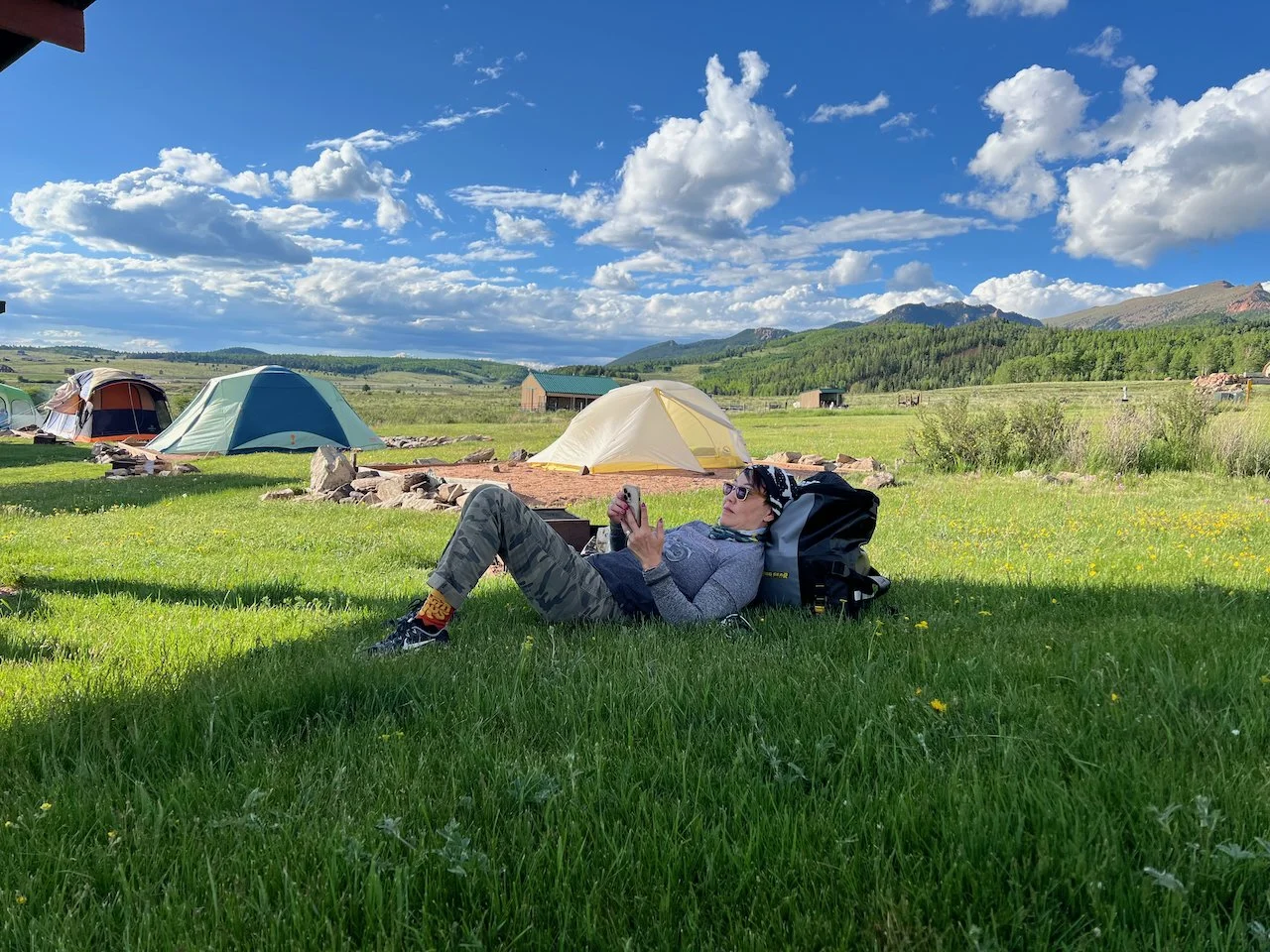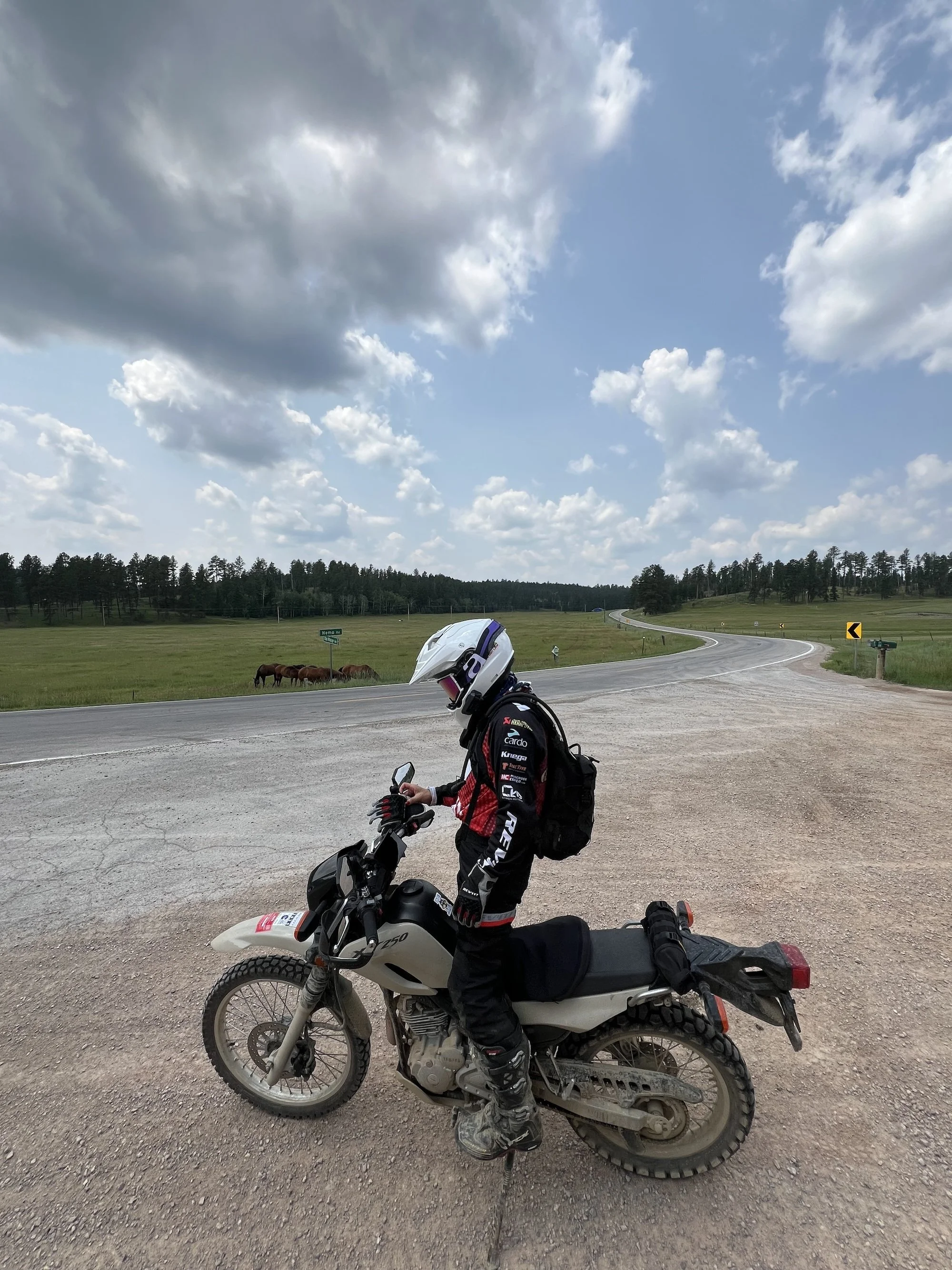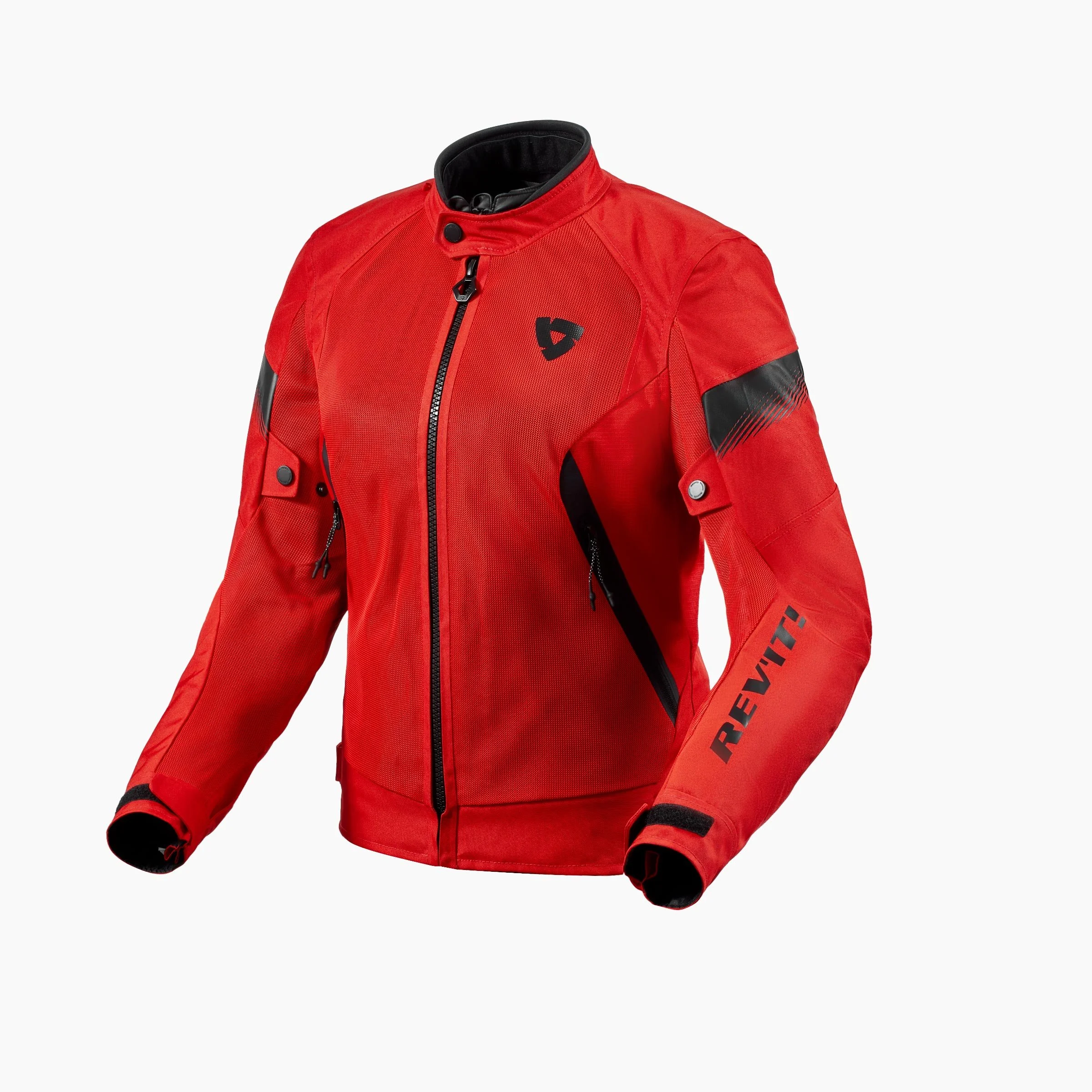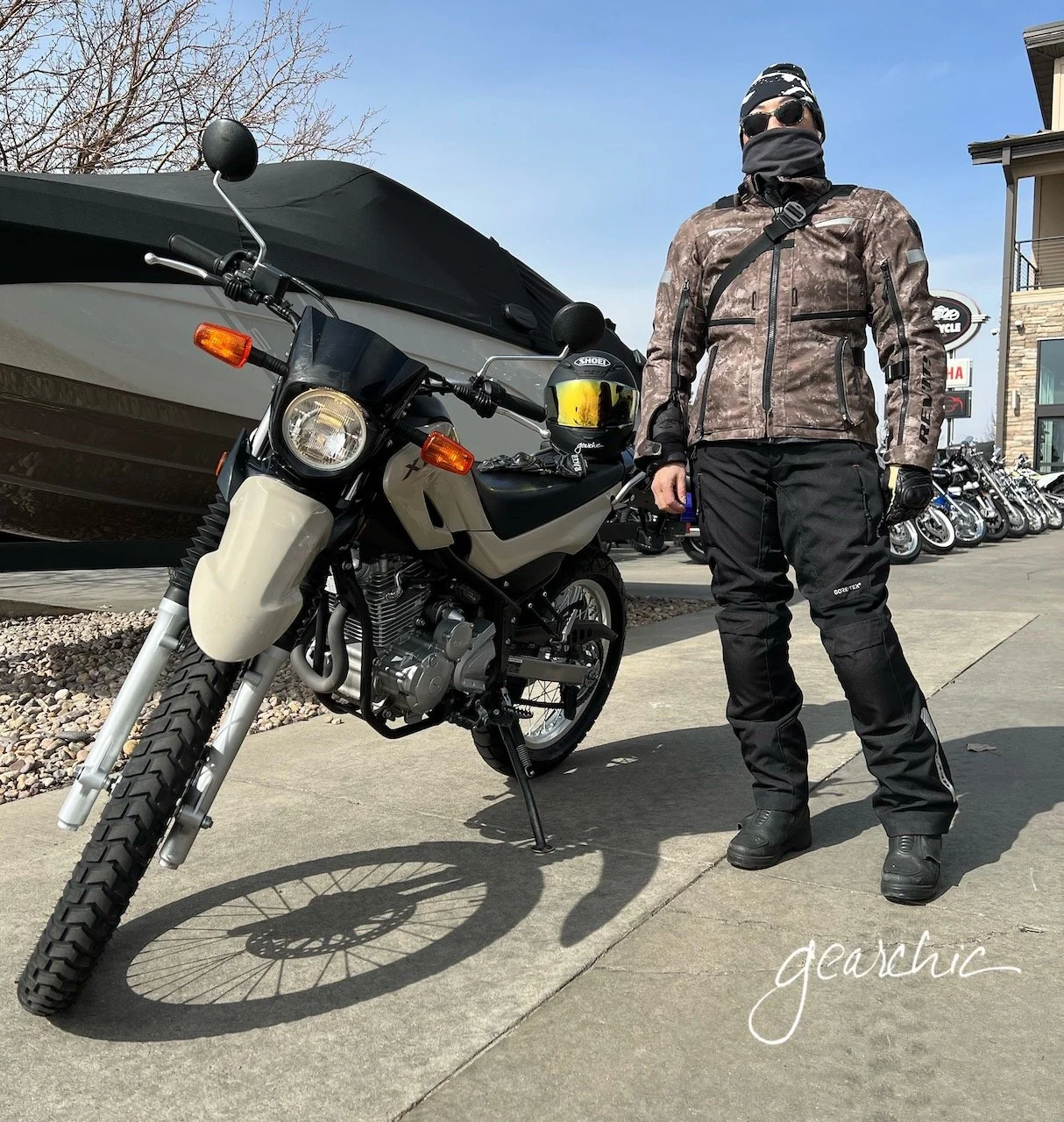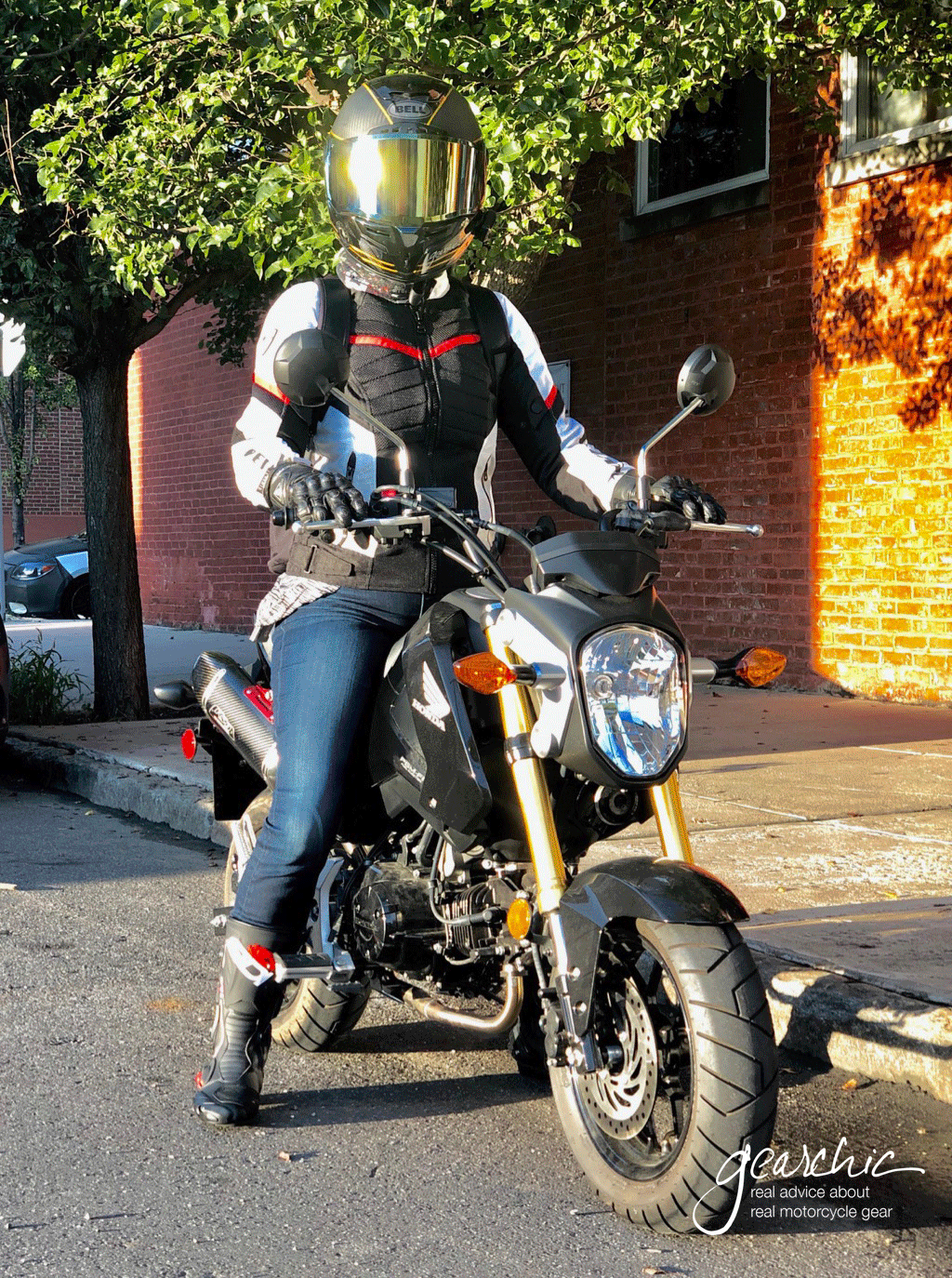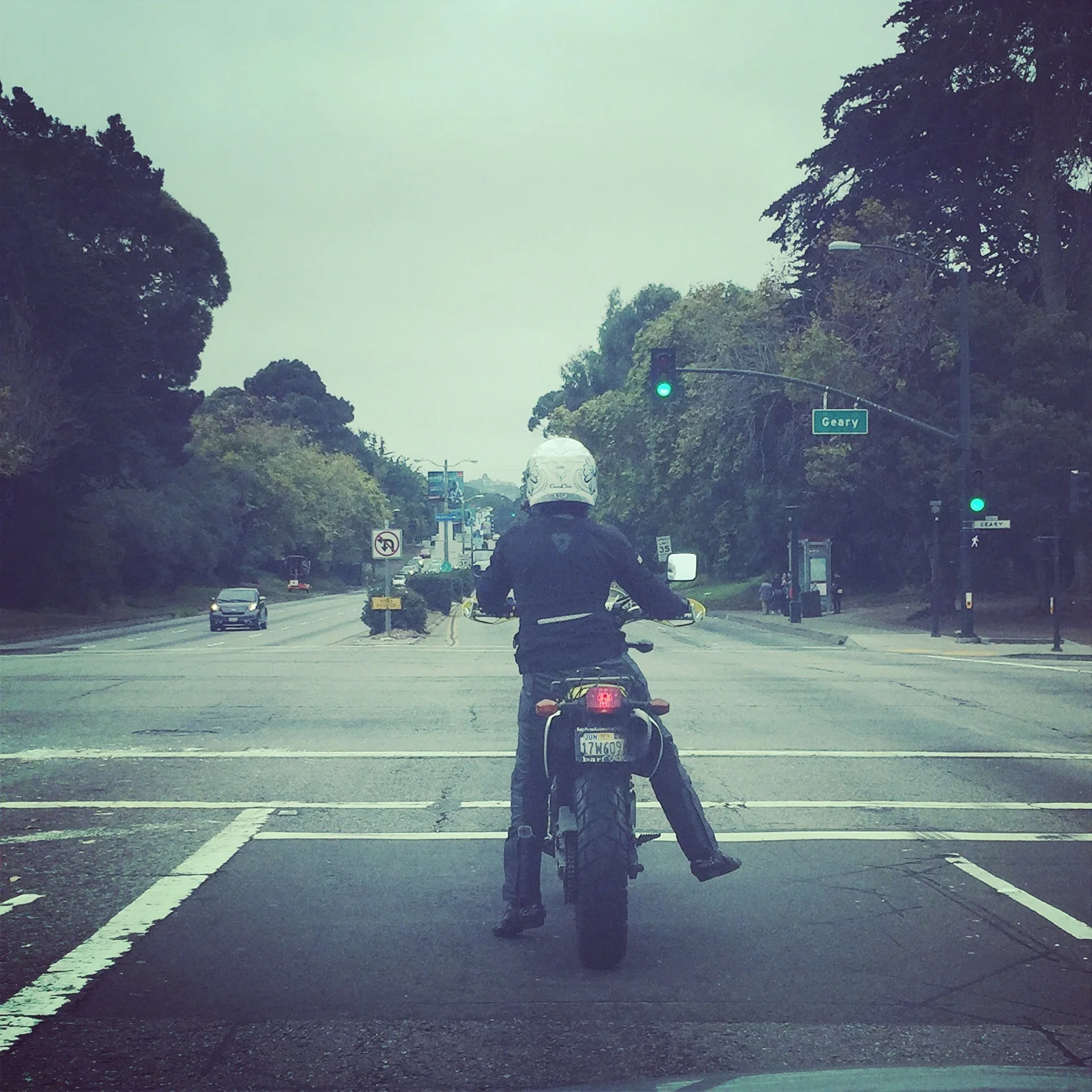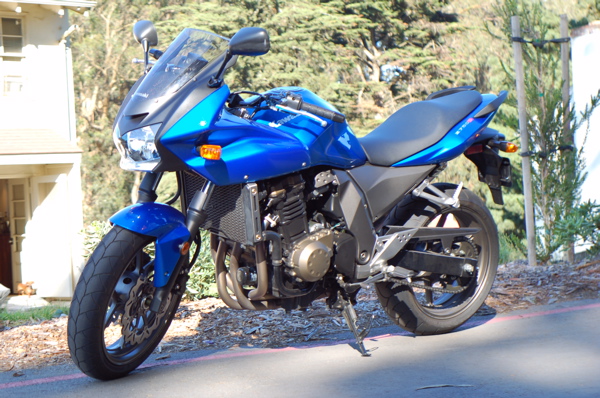The Grom is the perfect beginner motorcycle if you’re |this| small. I certainly wouldn’t recommend it if you’re blessed with a taller inseam. But I absolutely, positively, love this bike for anyone out there thinking they’re too small to ride anything.
Even if you can’t flat foot,
IT DOESN’T MATTER
IT DOESN’T MATTER
IT DOESN’T MATTER
IT DOESN’T MATTER
IT DOESN’T MATTER
I flat foot , but barely. Without shoes on, I’m not even flat! Also, I have a 28.5” inseam but the bike has a 30” one. So how is this possible? SUSPENSION!
Because riding some motorcycles (anything except a cruiser) inherently means that you won’t flat foot.
And if you want to join this club, I’m going to let you in on a little secret. You must learn how to ride a motorcycle first, so well that your inseam becomes far less important than you think it does right now.
Meet the Honda Grom. It’s a lightweight, single cylinder (less cylinders = slimmer bike between your knees), 220lb bike with plenty of power for a smaller rider. Because no, if you’re 250lbs, this bike will definitely feel severely underpowered.
I rode it home to downtown Philly on my way home from the RevZilla Philadelphia Showroom and it was SO much fun.
Traffic is moving at an average speed of 25-35mph, and if I was a new rider, I would feel comfortable on this bike, taking corners swiftly and smoothly. I wouldn’t be scared or worried because I accidentally hit the brakes too hard, which will likely result in me dropping 400-500+lbs of metal on my foot. Instead I would feel confident, comfortable and happy that I chose something that I’m not afraid to ride everyday.
You’re going to see all types of riders on all types of bikes. You will absolutely notice that not everyone has flat feet when they ride. I know what you’re thinking: “But if I don’t flat foot, I won’t be comfortable.” That is mostly true when:
You’re not wearing real riding boots (pretty much anything on Zappos)
You’re riding a bike that exceeds your riding experience (pretty much anything over 300cc because they’re probably going to be too heavy AND tall)
Your skills are so poor that you aren’t able to overcome your lack of height
When these areas are ignored, and you let your ego or peer pressure take over, you are not only making things more challenging/frustrating but you’re actually slowing down the process. Your instinct to ‘speed things up’ by buying a bigger bike is actually going to slow you down in every way possible.
Small bikes like Groms are designed to motivate, excite and move you towards your ultimate goal of learning to ride motorcycles! I’m going to do a more in-depth review in a few weeks after I’ve ridden it around a few more times.
So give yourself a huge break, and take time to learn how to ride a motorcycle (really well).
No one says “I want to learn how to ride poorly, or slowly, or at an extremely slow pace”. Do you?

